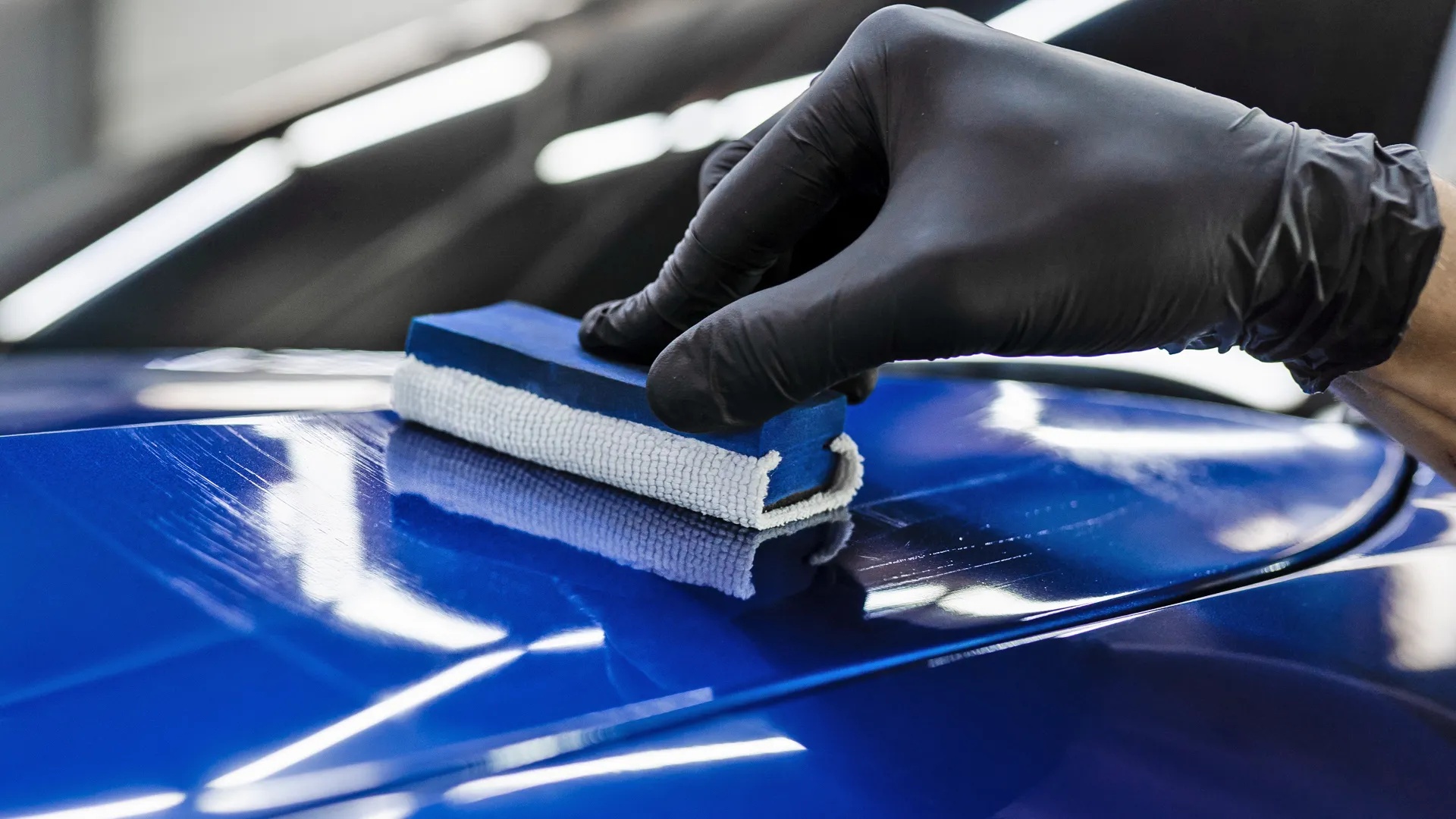Why Ceramic Coating Is the Ultimate Remedy for a Flawless End Up
Ceramic coating has arised as a leading solution for those looking for a remarkable surface for their cars, many thanks to its exceptional resilience and protective features. What elements really established ceramic finishing apart?
What Is Ceramic Coating?

When applied correctly, ceramic covering develops a hydrophobic surface that repels water and dirt, making it much easier to preserve and clean up. Unlike standard waxes or sealers, which normally provide brief defense, ceramic finishes can last for numerous years, depending upon the product quality and application technique. The process of using ceramic finishing needs meticulous preparation, consisting of comprehensive cleansing and occasionally repaint adjustment, to guarantee ideal bonding and performance.
Ceramic finishes are not restricted to vehicle surfaces; they can additionally be utilized on different products, including glass, steel, and plastics, supplying a versatile service for improving protection. Generally, ceramic finishing stands for a considerable development in surface area security innovation, combining both functional and visual advantages for a wide variety of applications.
Advantages of Ceramic Finishing
While lots of surface defense options exist, the benefits of ceramic coating stick out as a result of its unique properties and long-lasting performance. One of the key benefits is its remarkable toughness. Ceramic Coating Philadelphia. Unlike traditional wax or sealers that require frequent reapplication, ceramic finishings offer a resistant layer that can last for several years, substantially lowering maintenance initiatives
Another significant benefit is improved protection versus ecological contaminants. Ceramic finishes create a hydrophobic surface area that fends off water, dirt, and different toxins, making it simpler to cleanse. This function not just protects the car's appearance however additionally lessens the risk of corrosion and oxidation, particularly in extreme weather.
Additionally, ceramic coatings provide superior resistance to UV rays, preventing fading and degradation of paint with time. This UV security is critical for preserving the aesthetic worth of surface areas and vehicles revealed to guide sunshine.
Additionally, the glossy coating attained with ceramic finish enhances the total aesthetic charm, giving surface areas a showroom-quality sparkle. Overall, ceramic finishes represent a significant improvement in surface defense innovation, giving long-lasting advantages that accommodate both useful and visual needs.
Just How It Works
Recognizing the scientific research behind ceramic layers discloses just how they provide such impressive protection and durability. At its core, a ceramic finishing is a fluid polymer that chemically bonds with the vehicle's factory paint. This bonding creates a protective layer that is both oleophobic and hydrophobic, repelling water, dirt, and oil. The main part of a lot of ceramic finishings is silicon dioxide (SiO2), which is originated from quartz. This compound adds to the finish's solidity and resistance to scrapes, UV rays, and environmental impurities.
The application process includes numerous steps, including surface click for source preparation, which is crucial to accomplishing ideal attachment. Once applied, the coating undertakes a healing process, during which it sets and develops a semi-permanent bond with the paint surface area. This bond is what differentiates ceramic finishes from traditional waxes and sealants, supplying a longer-lasting safety barrier that can withstand for years.
Additionally, the density of the covering can enhance its protective qualities, making sure that it can hold up against rough conditions. Ultimately, the scientific research of ceramic finishes integrates innovative products with ingenious application techniques to supply an unrivaled level of protection and visual enhancement for automobiles.
Contrast With Standard Techniques
When compared to traditional paint protection methods such as sealers and waxes,The advantages of ceramic finishes become especially evident. While waxes supply a momentary shine, usually lasting a couple of weeks to a number of months, ceramic layers provide a durable protective layer that can sustain for numerous years. This toughness substantially lowers the regularity of reapplication, making ceramic coverings a much more cost-effective remedy gradually.
In addition, typical methods frequently call for extensive prep work and several applications to achieve a satisfactory level of security. In contrast, ceramic coatings bond at a molecular degree with the automobile's surface, producing a robust shield versus environmental impurities like UV rays, acid rainfall, and road salts. This bond improves the car's resistance to scrapes and swirl marks, which prevail with conventional waxes and sealants.
In addition, the hydrophobic buildings of ceramic finishings ward off water and dirt, resulting in easier cleaning Learn More and maintenance. In contrast, wax and sealant-treated surface areas can bring in grime, necessitating more constant cleaning - Ceramic Coating Philadelphia. Generally, ceramic coatings not only supply superior protection yet additionally supply a more visually attractive and enduring finish, developing them as the favored option for discerning car owners
Application and Maintenance Tips

Utilizing a foam applicator, use the finishing in little sections, complying with the manufacturer's standards concerning thickness and overlap. Permit sufficient treating time between layers, usually 1 day, to make sure proper bonding. After application, it is important to avoid direct exposure to water or harsh components for at the very least a week to permit the finish to completely heal.
In addition, using a ceramic maintenance spray can improve the layer's hydrophobic homes and long life. Routine inspections for any kind of indications of wear will aid maintain the layer's stability and protect that excellent surface.
Verdict
In conclusion, ceramic finish arises as a remarkable alternative for accomplishing a remarkable vehicle surface. By developing a robust bond with manufacturing facility paint, check my reference ceramic covering successfully shields versus scratches, UV rays, and ecological pollutants.
